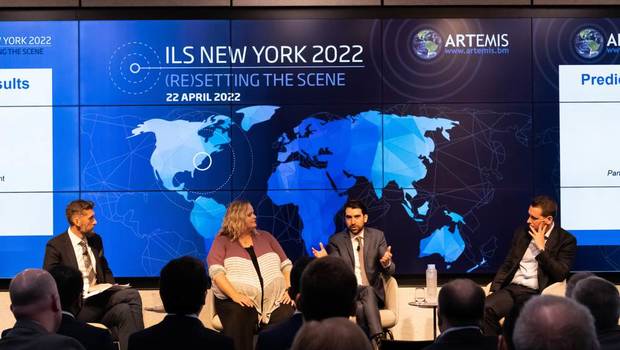Three Takeaways From ILS NYC 2022
11 May 2022Resetting and reconnecting with the reinsurance industry was the conference’s theme.

Insurance-linked securities (ILS) bundle non-financial risks such as natural disasters, longevity and mortality into investment products. This asset class includes catastrophe bonds (or "cat bonds:) and typically have little to no correlation with the broader financial markets and can therefore serve as an effective diversifying class for institutional and sophisticated investors.
"(Re)setting the scene" was the timely theme when the ILS community — issuers, investors and service providers — came together in New York City on April 22 for the fifth ILS conference. This “reset” was in order given the conference’s two-year hiatus, disruptions caused by the pandemic and another year of catastrophe losses.
The conference's panel discussions emphasized four key themes: predictability (delivering on promises), accessibility, differentiation (within the ILS industry) and responsibility (climate and ESG). Based upon the panels I attended and discussions with SS&C Intralinks customers and other attendees, I came away with three takeaways:
- Transparency and data integrity are critical. Ensuring these to investors as well as keeping all parties informed is crucial. There were unexpected losses from some trigger events in 2021 that left a bad taste in the mouths of many investors. Judy Klugman, head of ILS sales at Swiss Re and moderator of the “Accessibility” panel discussion noted: "Investors understand that losses are part of the trade … if the product you invested in did not perform as you thought it should react, that wherein lies the problem."
- To grow and scale, the industry needs to tap into the broader capital markets and its much larger institutional investor base. Improving accessibility is a priority. One of the most important ways to get there is to upgrade processes via technology and even use the same or similar tools employed by the more mature sectors of the capital markets. By doing so, ILS issuers can establish more efficient and secure deal processes, scale the number of transactions and even reach investors outside their networks.
- Technology is essential. Fortunately, there is technology to help address the myriad of issues mentioned. There are best-in-class solutions designed to streamline everything from origination, structuring, marketing, due diligence and reporting not only making it easier for ILS issuers to facilitate an efficient transaction but also improving transparency and the overall experience for investors and other deal stakeholders. Below are key technology features to consider:
- Readily accessible, cloud-based document repository to distribute time-sensitive, confidential information to investors, rating agencies, law firms and all other deal stakeholders.
- Moderated question-and-answer dialogue to mitigate the tedious and repetitive back-and-forth Q&A between everyone involved in the deal. An organized Q&A could help advisors and agents manage deals better and maintain open and clear communications with investors. It would also reduce emails and phone calls, prevent version-control issues, allow specific policy questions to be directed to the correct subject matter expert and answers delivered to the appropriate parties, and provide a way to archive all of that correspondence at any time — particularly important should trigger events happen in the future.
- Security and data privacy because these transactions involve some of the most confidential and sensitive information, such as insurance policies and policyholder information. There should be multiple mechanisms to protect data, and the technology provider should be certified compliant with global data privacy laws such as GDPR.
- Recognition in the global capital markets to help connect ILS issuers with institutional investors active in the broader capital markets. Employing solutions leveraged for debt financing, M&A and other capital markets transactions will help many of these investors easily access and get more comfortable with ILS products — and may also help contribute to the growth of the ILS industry.
Conclusion
Despite the industry still reeling from the pandemic and periods of losses, the conference was packed with attendees. The overall mood was optimistic. Momentum continues to build after a record-breaking year of issuance of risk capital in 2021 and further growth in the first quarter led by property catastrophe bonds.
Much of the conversation between panelists and attendees focused on ways the industry could continue to improve and grow. There was a thoughtful and meaningful dialogue between originators, underwriters and investors. Each session encouraged questions and feedback, showing the industry’s willingness to take on challenges.
Related Content

Jordan Brown
Jordan Brown is an account executive on the banking and securities team at SS&C Intralinks. He helps clients securely share and collaborate on sensitive information throughout the various stages of the financing deal lifecycle. Prior to Intralinks, Jordan worked at Bain Capital, LP, where he managed the information flow of due diligence and facilitated the deal closings for capital-market and distressed debt transactions.


